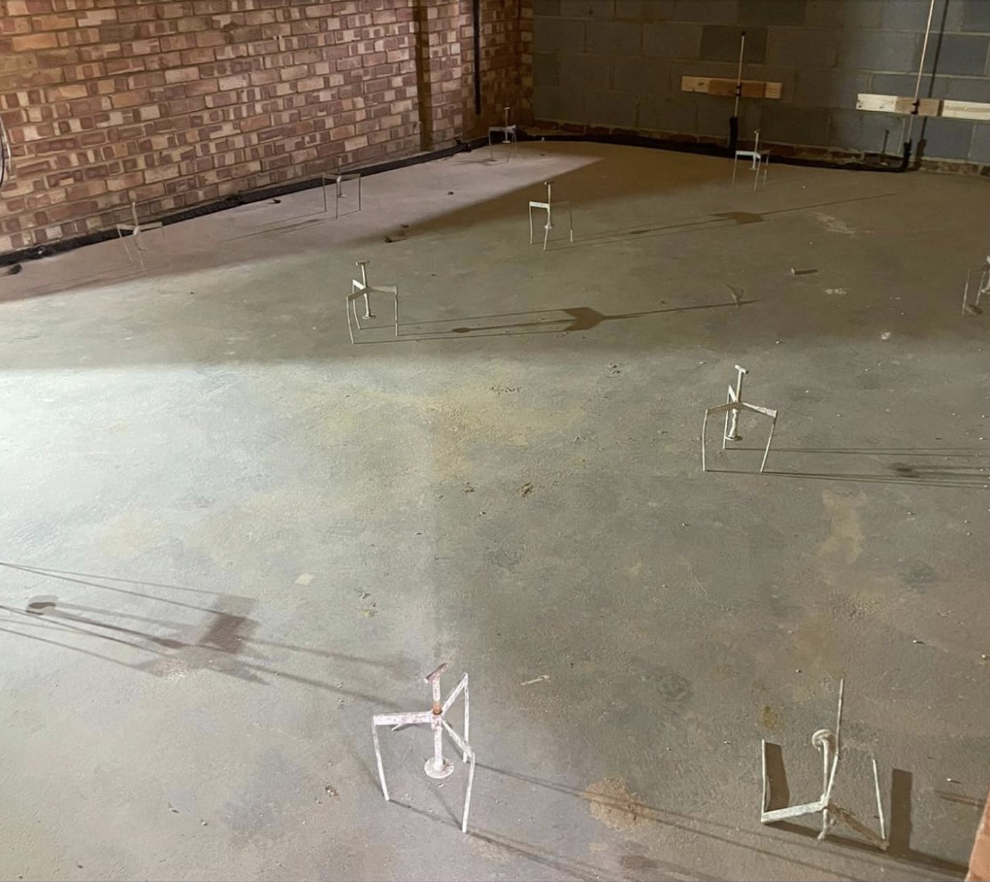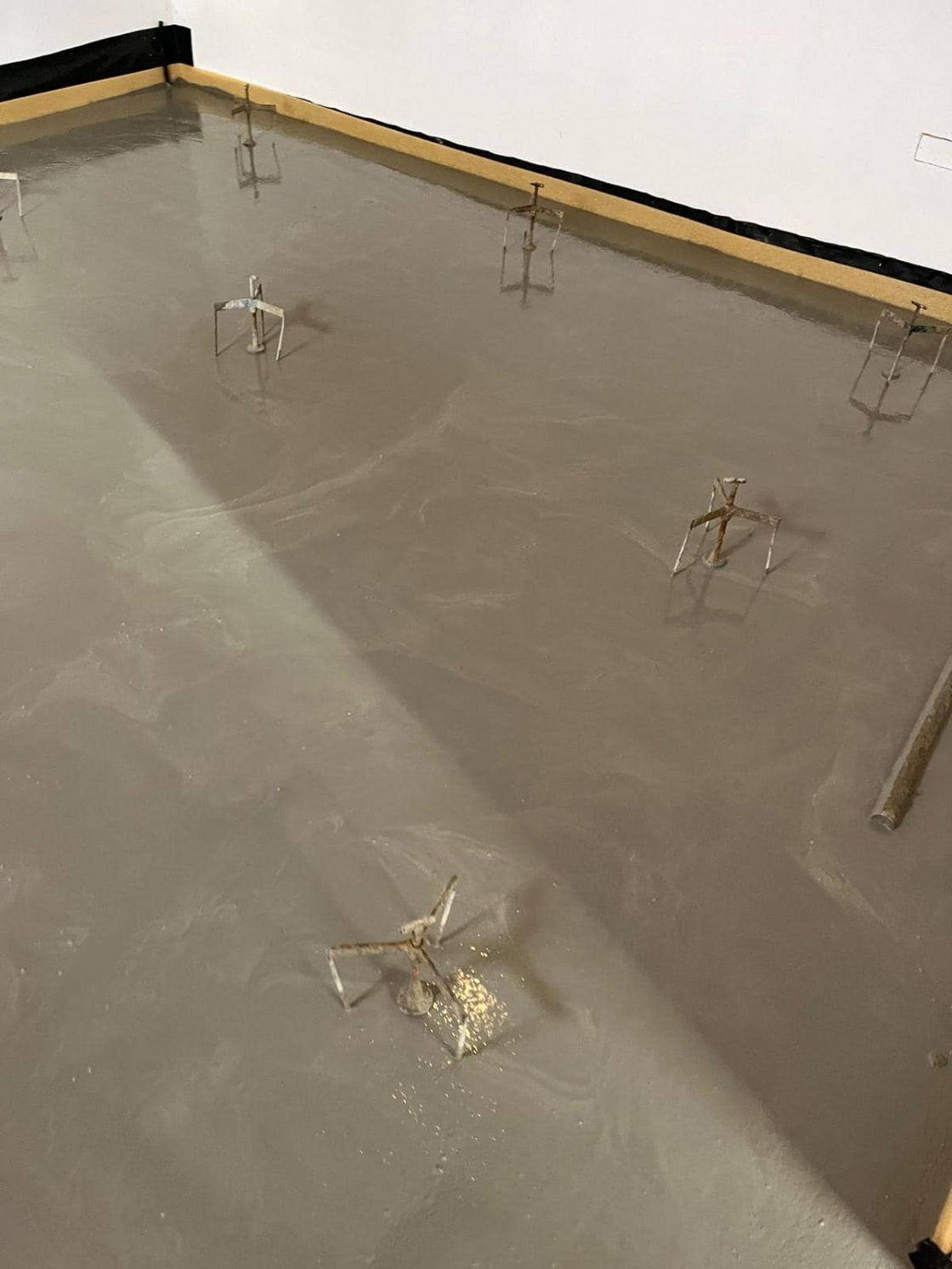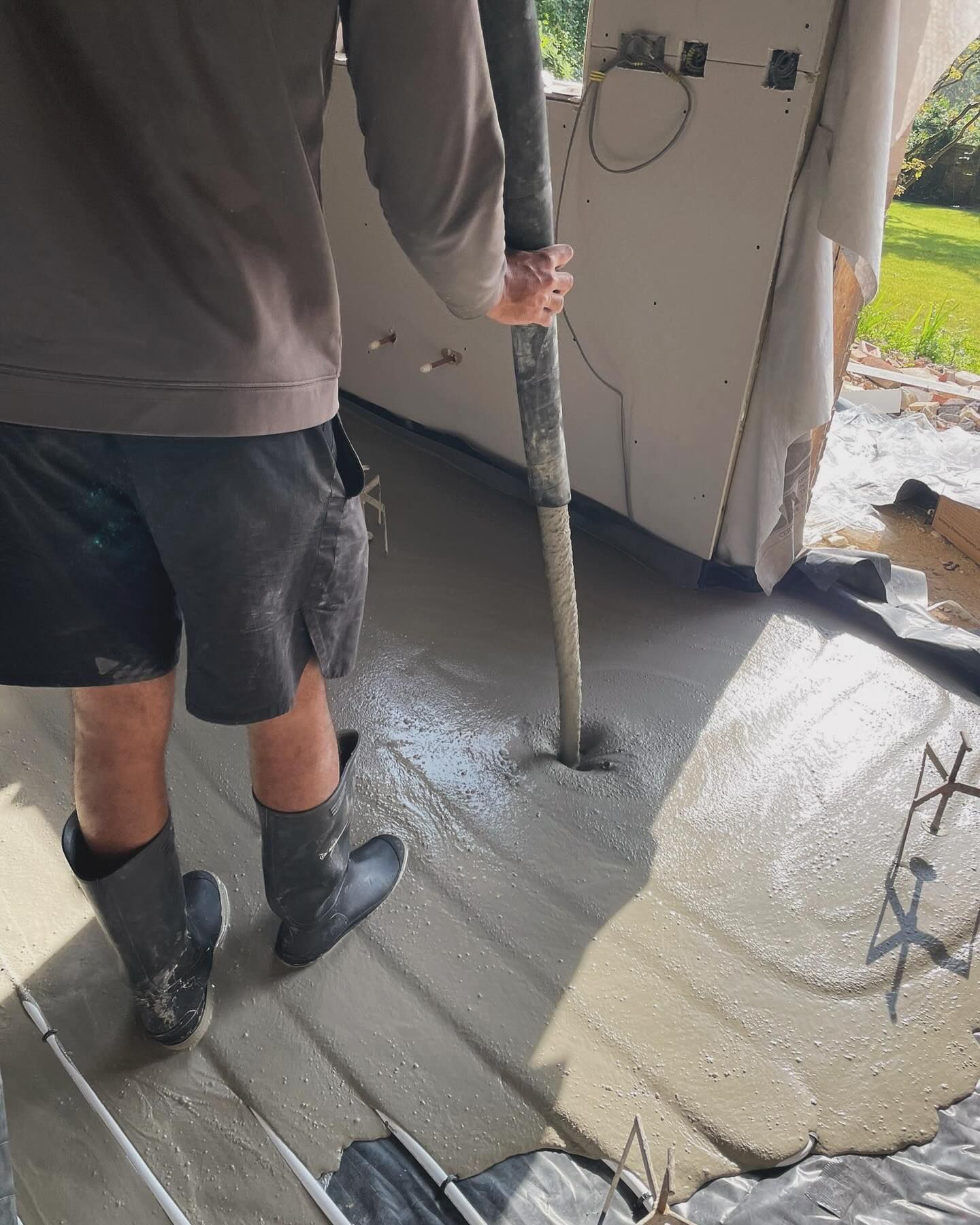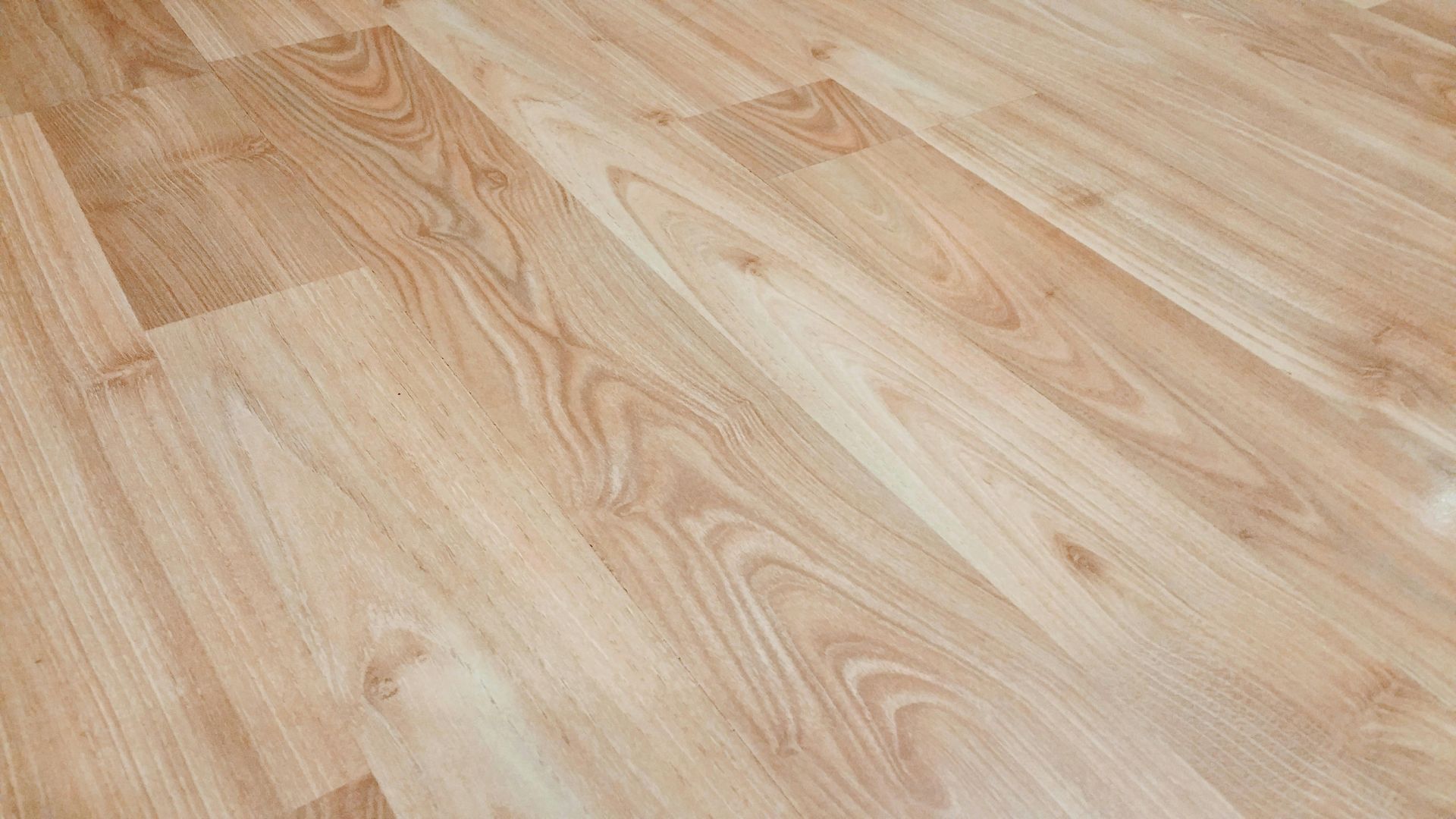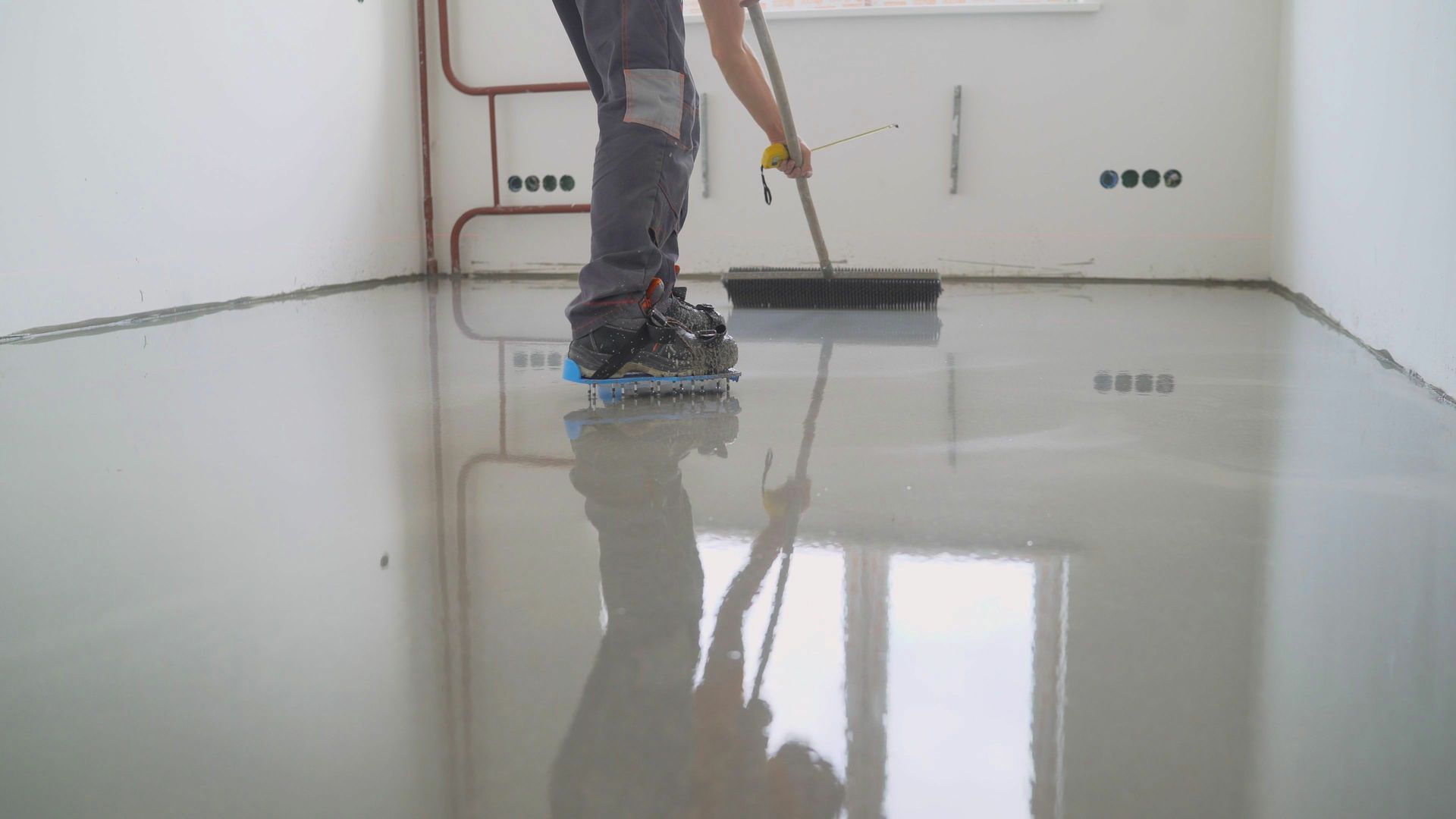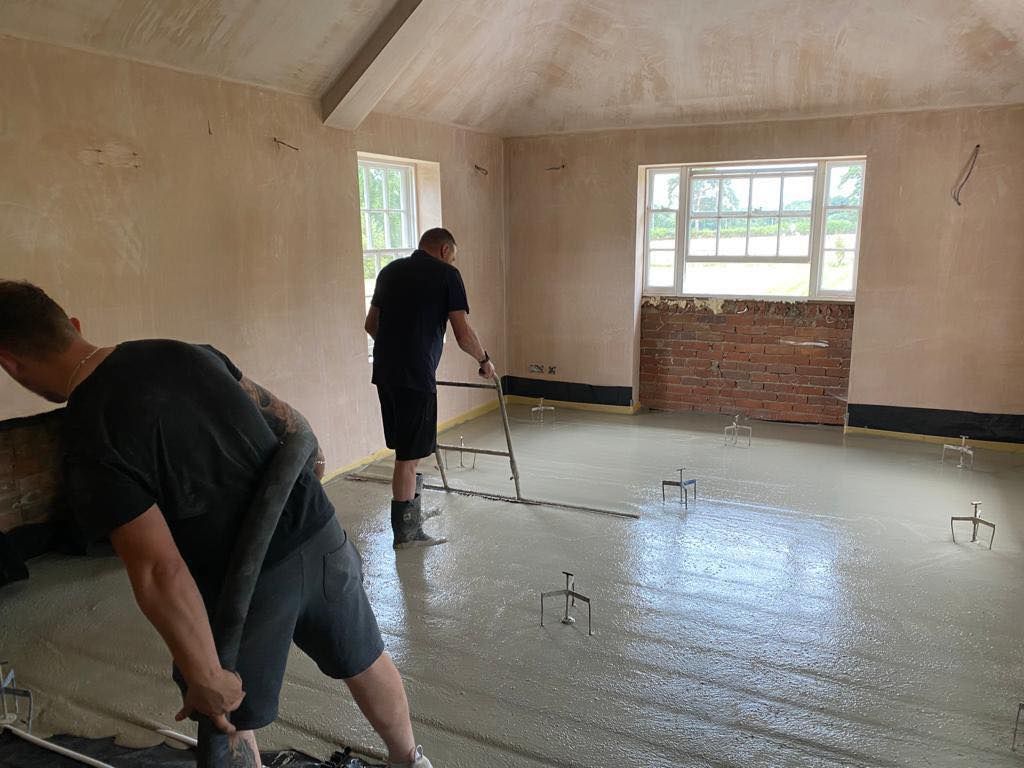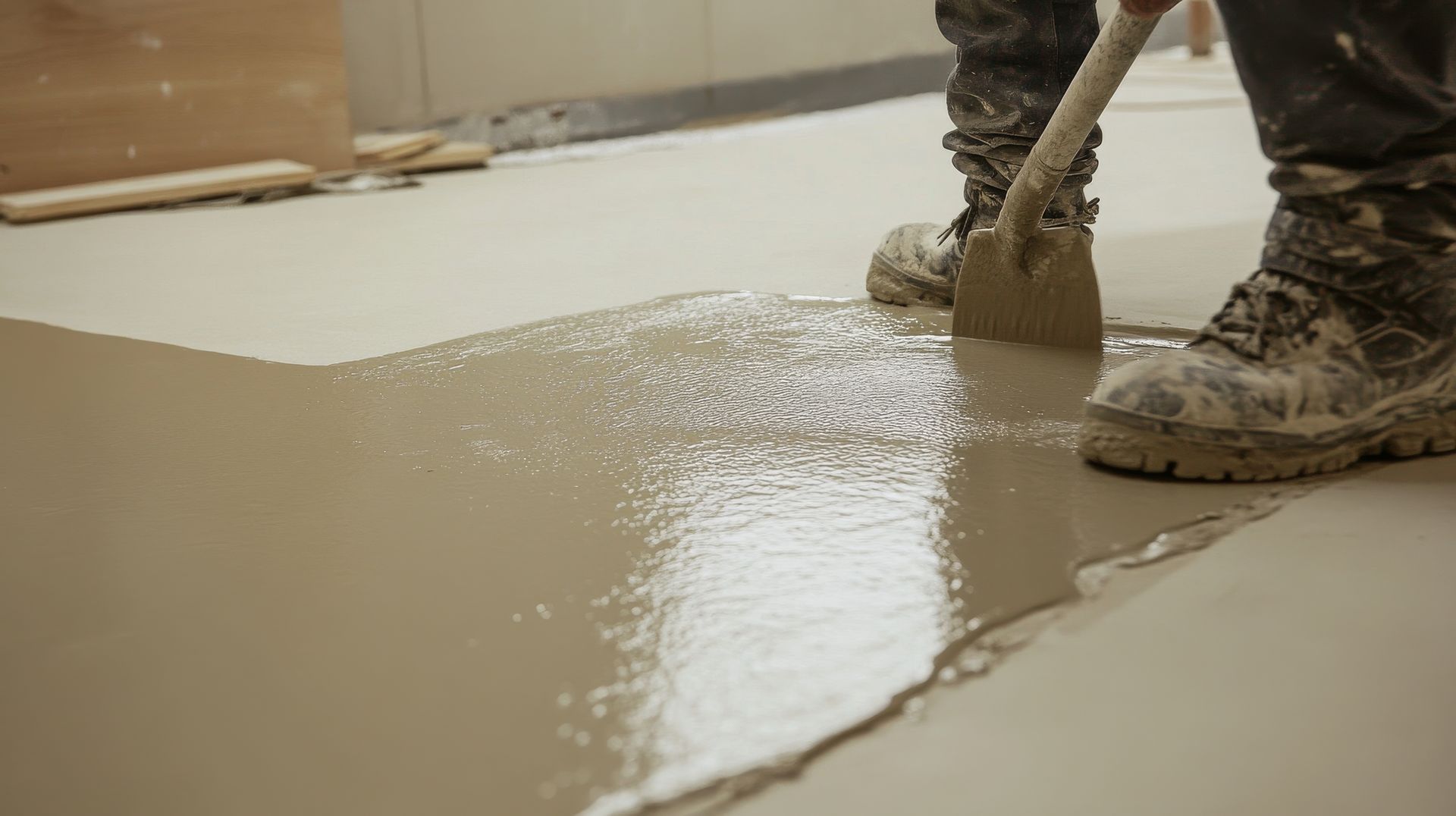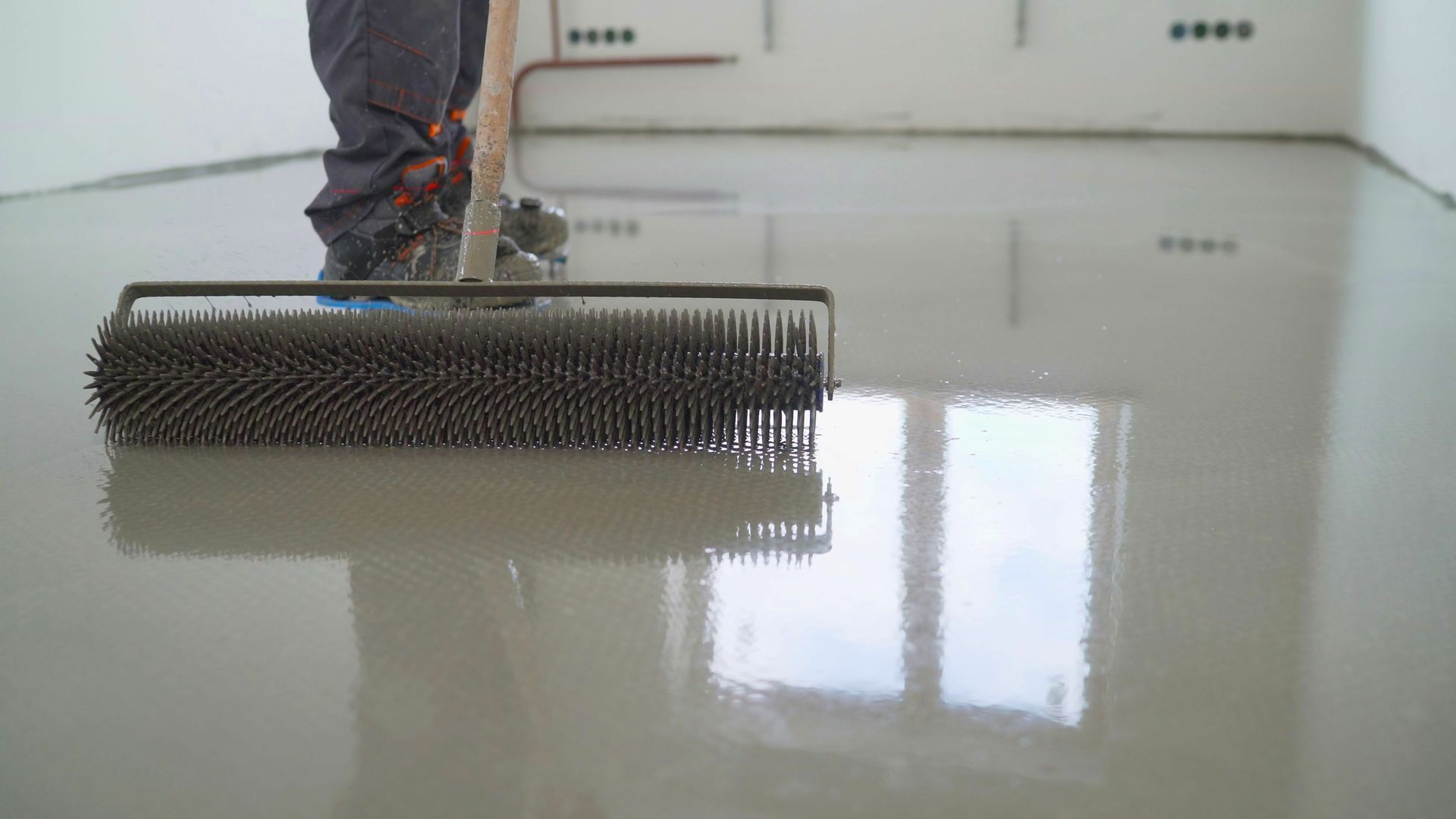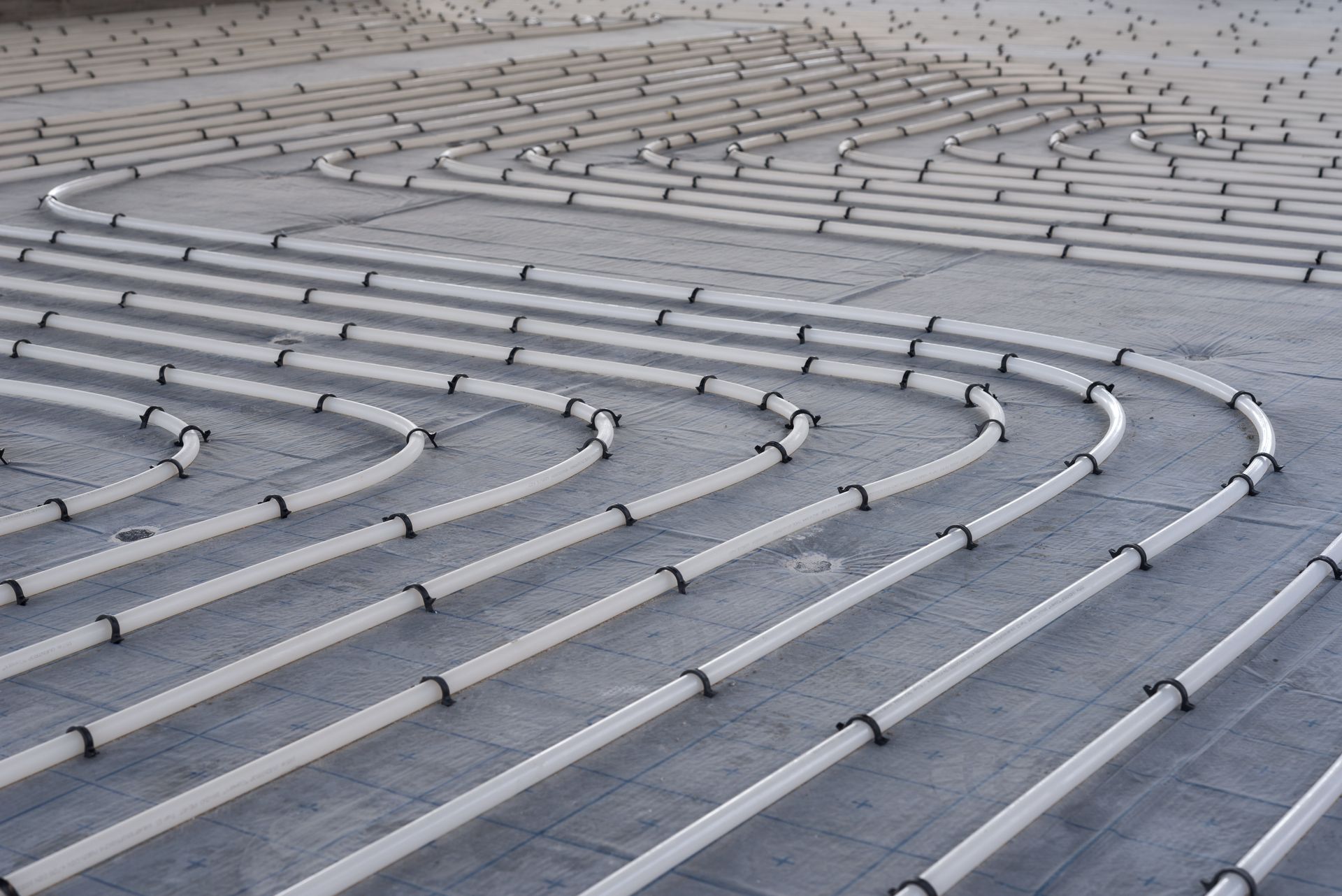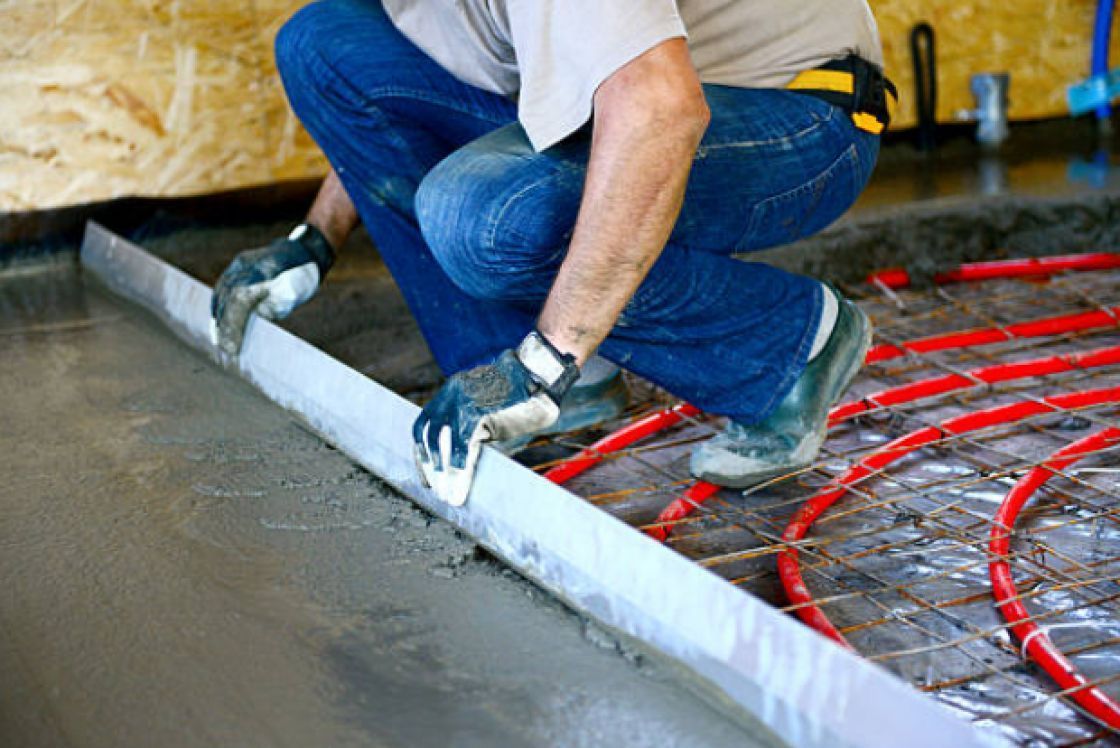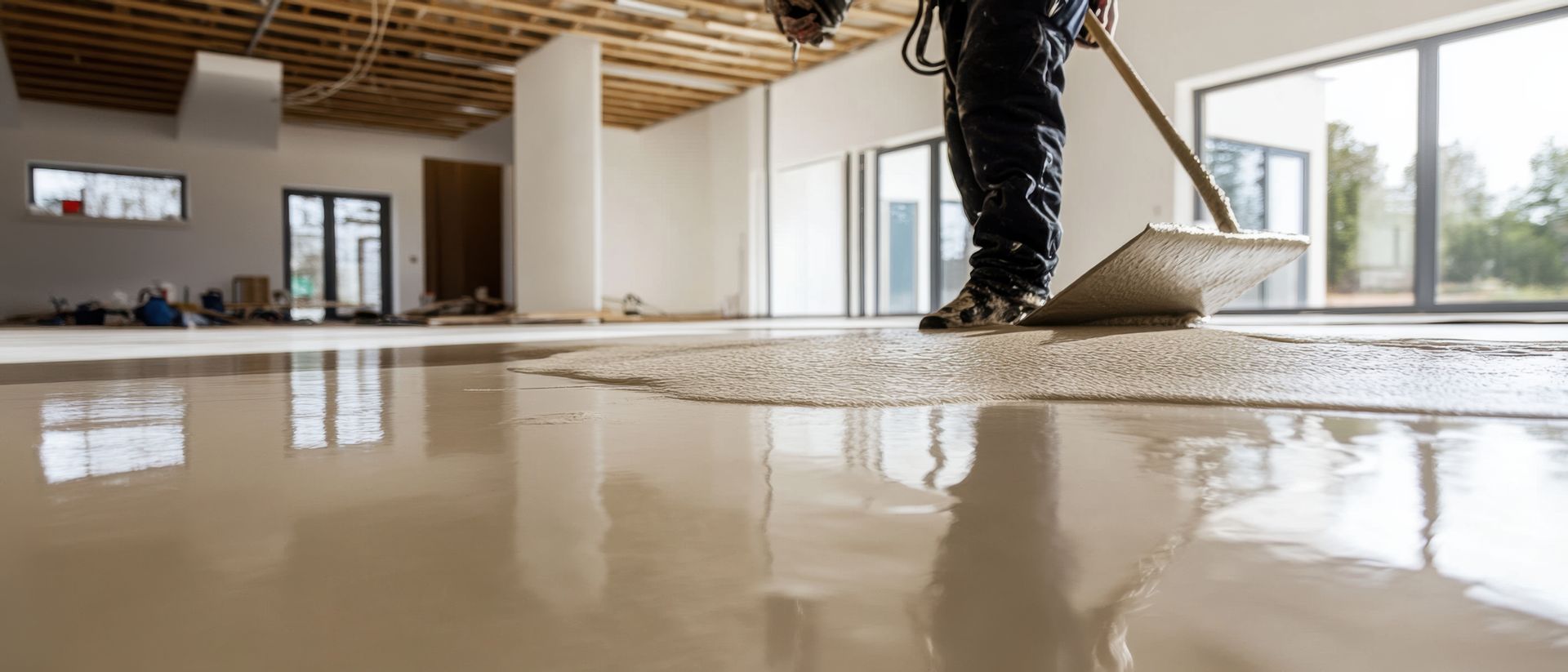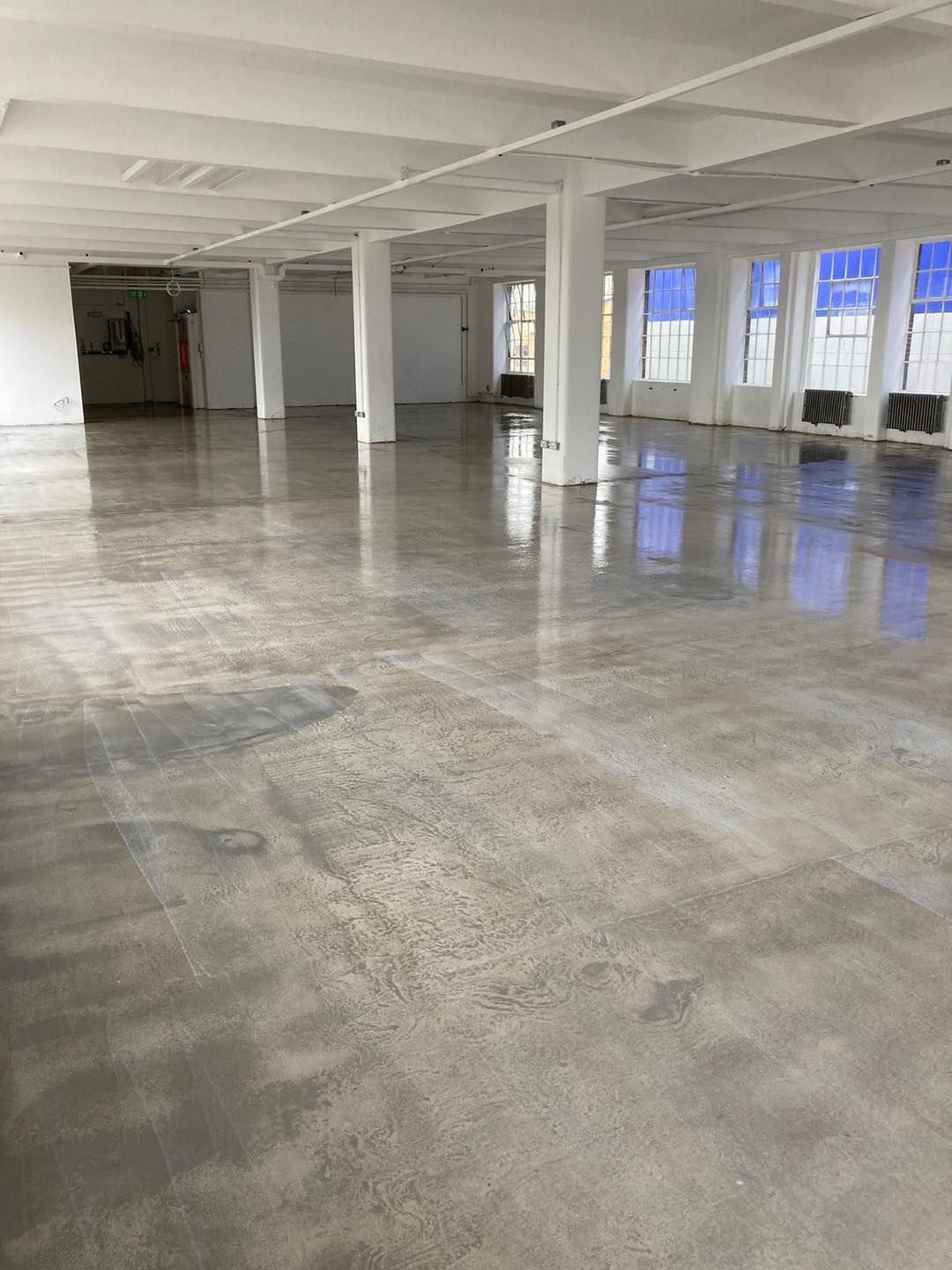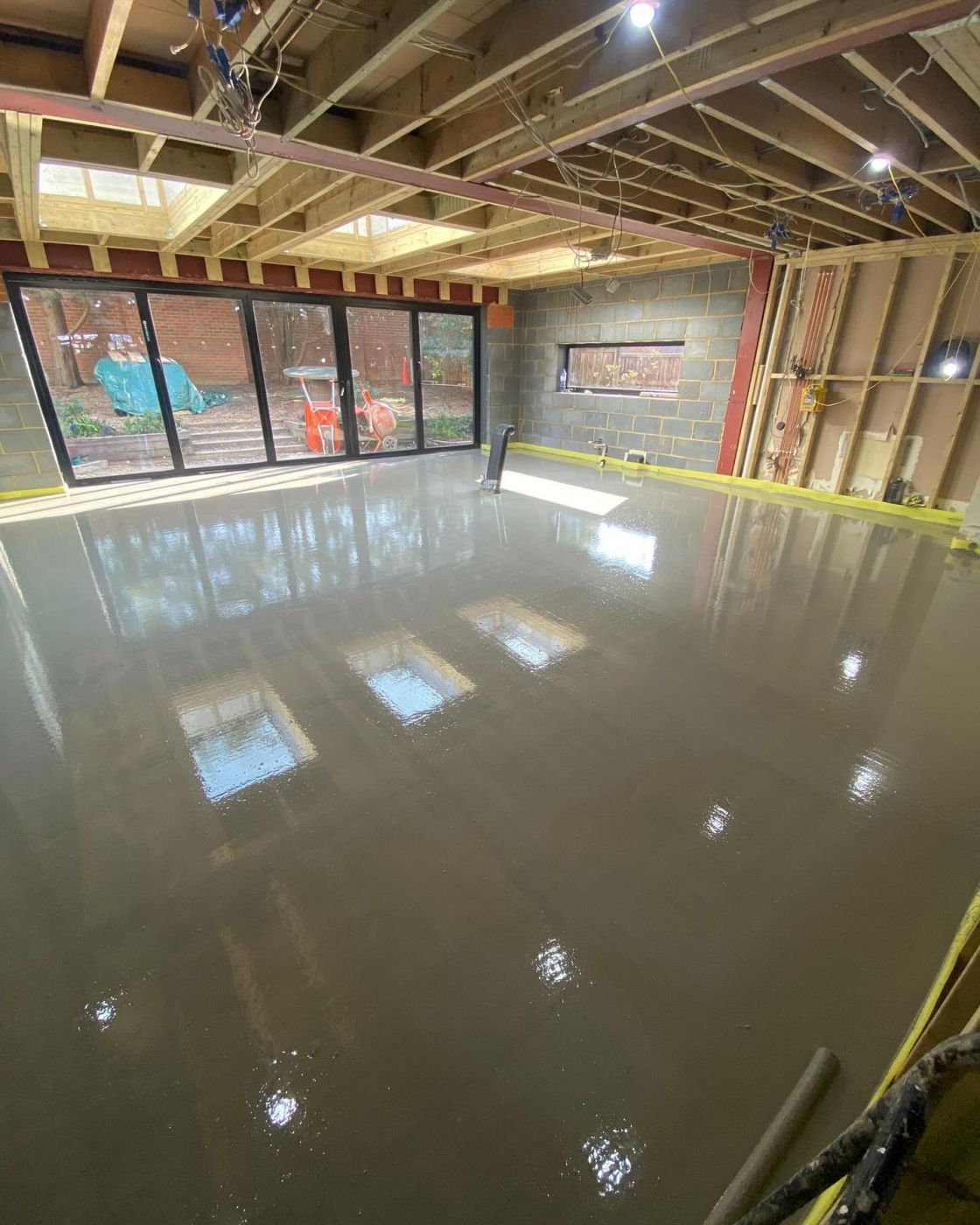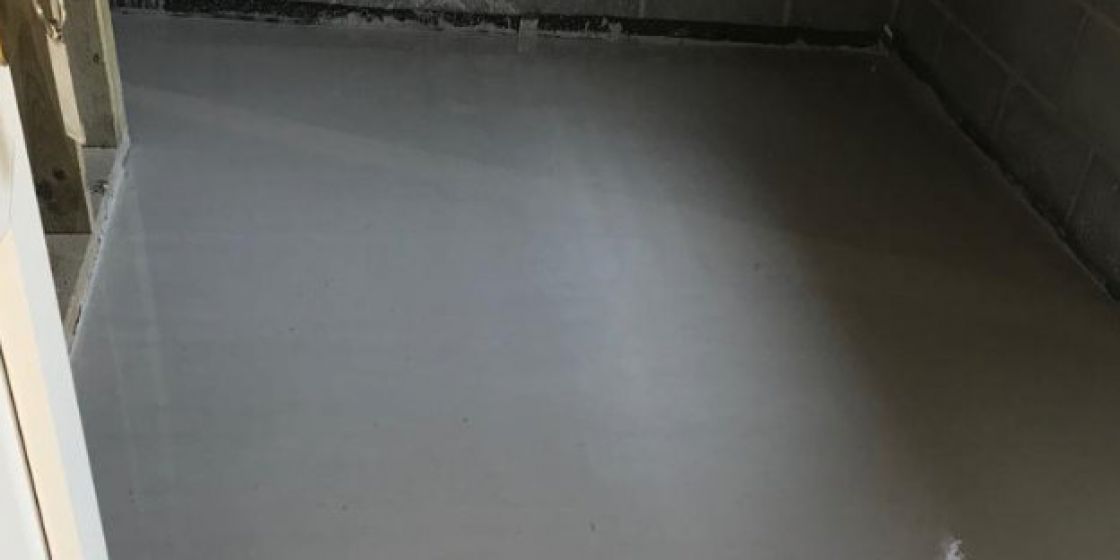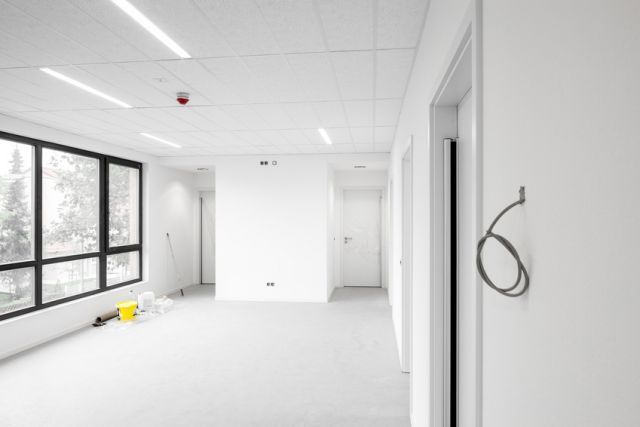THE DIFFERENCE BETWEEN CONCRETE AND FLOOR SCREEDS
Concrete and screed are widely used in the construction industry, so how do they differ?
You need to combine cement, water, aggregates, and sometimes admixtures to make concrete. It is frequently employed in constructing foundations, floors, walls, and trusses. However, the screed contains no water and is made from a thinner mixture of cement and other particles. Underlayment and floor finish is frequently used together as a levelling layer.
As a general rule, the thickness and composition of concrete and screed are the fundamental differences. Screed and concrete are widely utilised in the building sector and have certain similarities. Cement, water, and aggregate are the essential ingredients (sand, stone or gravel).
However, there are some substantial distinctions in how they are used in construction. Screed is put to a concrete subfloor as a top layer surface and is used for building and structural purposes.
HOW DO CONCRETE AND SCREED VARY PHYSICALLY?
Cement, water, and aggregate make both floor screed and concrete. Differences in aggregate type are the most significant variation between these two approaches.
Hardcore materials such as gravel are added to the concrete mix while preparing it. These little gems are typically no larger than 20 millimetres in diameter, and this is ideal for structural work because of their strength, longevity, and ease of use. As a side effect, the mixture becomes coarser.
It’s not the same aggregate used for screeds, which are made of sand and cement. You can mix fine, sharp sand, with a maximum grain size of roughly 4mm, into the cement. These specific characteristics make it the perfect choice for a concrete floor finish because of its fine, densely packed texture.
HOW DO SCREED CONCRETE AND REGULAR CONCRETE DIFFER IN APPEARANCE?
These two materials can differ in numerous ways. The coarse, hard core particles in the former give it a rougher texture than those in the screed. Even the untrained eye can notice gravel and stone fragments in the cement.
Screed, which resembles mortar but is finer-grained, is more suited for use within the home. As a result, a final floor finish with a smoother surface can be applied. Like dried-up hard-packed wet sand, its surface texture is coarse but refined simultaneously.
HOW MUCH CONCRETE OR SCREED SHOULD YOU USE?
With a specified thickness of at least 100mm for home usage and up to twice that thickness for areas with intensive use, concrete is typically laid significantly thicker than screed. The screed can be as thin as 50mm or as wide as 100mm (on average, 75mm).
Depending on the type of screed you’re using, the location, the expected foot traffic, and the desired finish, the appropriate screed layer thickness will change.
WHAT IS THE PURPOSE OF CONCRETE AND FLOOR SCREED?
With its tremendous compressive strength, concrete is an excellent building material. Additionally, this artificial material is long-lasting, non-combustible, and durable. Additionally, it is an extremely versatile product that may be used in applications from large-scale construction projects to small-scale house renovations.
In addition to these purposes, it can be used for:
- Walls
- Driveways
- Foundations/Footings
- Patios
- Roads
- Pilings
- Flooring
- Drainage layers
- Car parks
Instead of being used as a structural material, sand is placed on concrete floors as the top layer over the slab. Depending on your choice, it is possible to lay down a layer of screed before laying down a final floor covering like wood, resin, linoleum, or tiles. It’s built to last and can handle heavy foot traffic and regular use.
Protecting and levelling the floor will help it endure longer. Underfloor heating systems frequently use it because it’s highly insulating.
Screeds can be divided into three broad categories. The base can be glued directly to the bonded screed if desired. An unbonded screed is usually laid unbonded over a damp-proof membrane or as a floating screed layer on top of the insulation, such as a floor with underfloor heating. It is possible to add fine metal mesh or glass mesh to screeds to make them sturdier.
BENEFITS OF CONCRETE AND SCREED
Because of its tremendous compressive strength, concrete is an excellent choice for construction. It can be found in many construction projects, from retaining walls and roadways to piling and flooring.
It is not only solid but also long-lasting, cost-effective, and valuable in a variety of contexts. A fire would be less likely to spread if it is non-combustible. The essential advantage is that volumetric mixers can batch it to your precise parameters and quantity.
When it comes to interior flooring or surfaces, screed is commonly used to smooth out any lumps or bumps. When it comes to concrete, screeding isn’t just a cosmetic upgrade; it may also extend the life span of concrete by creating an impermeable layer that protects the floor from the rigours of heavy foot traffic.
In commercial settings, screed is often used as a finish since it is both attractive and valuable. Resin flooring, for example, can be applied over it as a final floor finish. Underfloor heating pipes benefit greatly from screed’s qualities as an insulation material.
CONCRETE AND SCREED ADDITIVES
The characteristics of screed and concrete can be altered by adding admixtures. Adding plasticisers to screed can improve workability, bonding, shrinkage, or damp-proofing properties. We can employ admixtures to either speed up or slow down the setting process in some cases. You can add fibres and retarders to your screed products to keep them working for longer.
Are you looking for a local screeding company?
Contact Screed Easy for more information.
